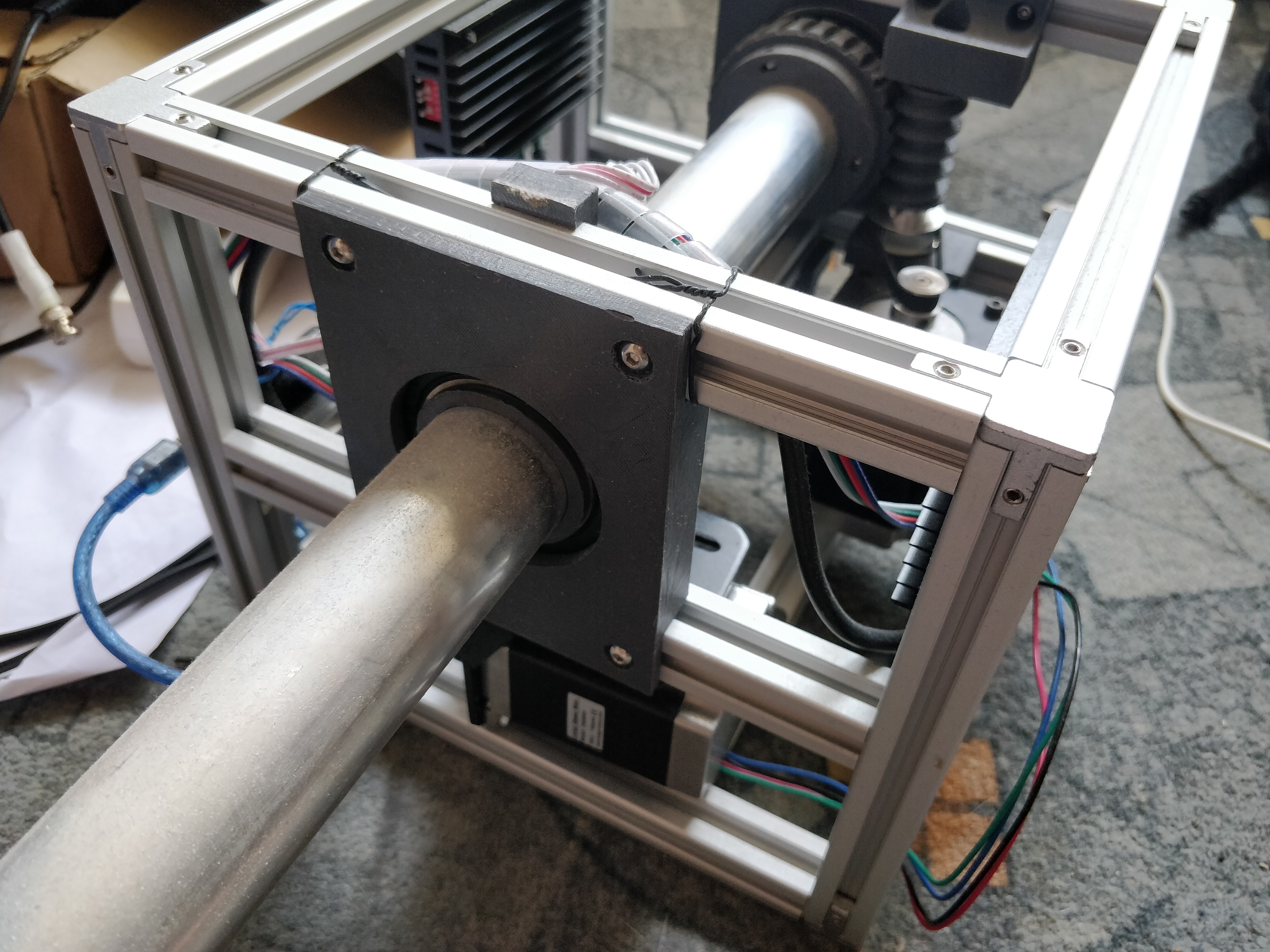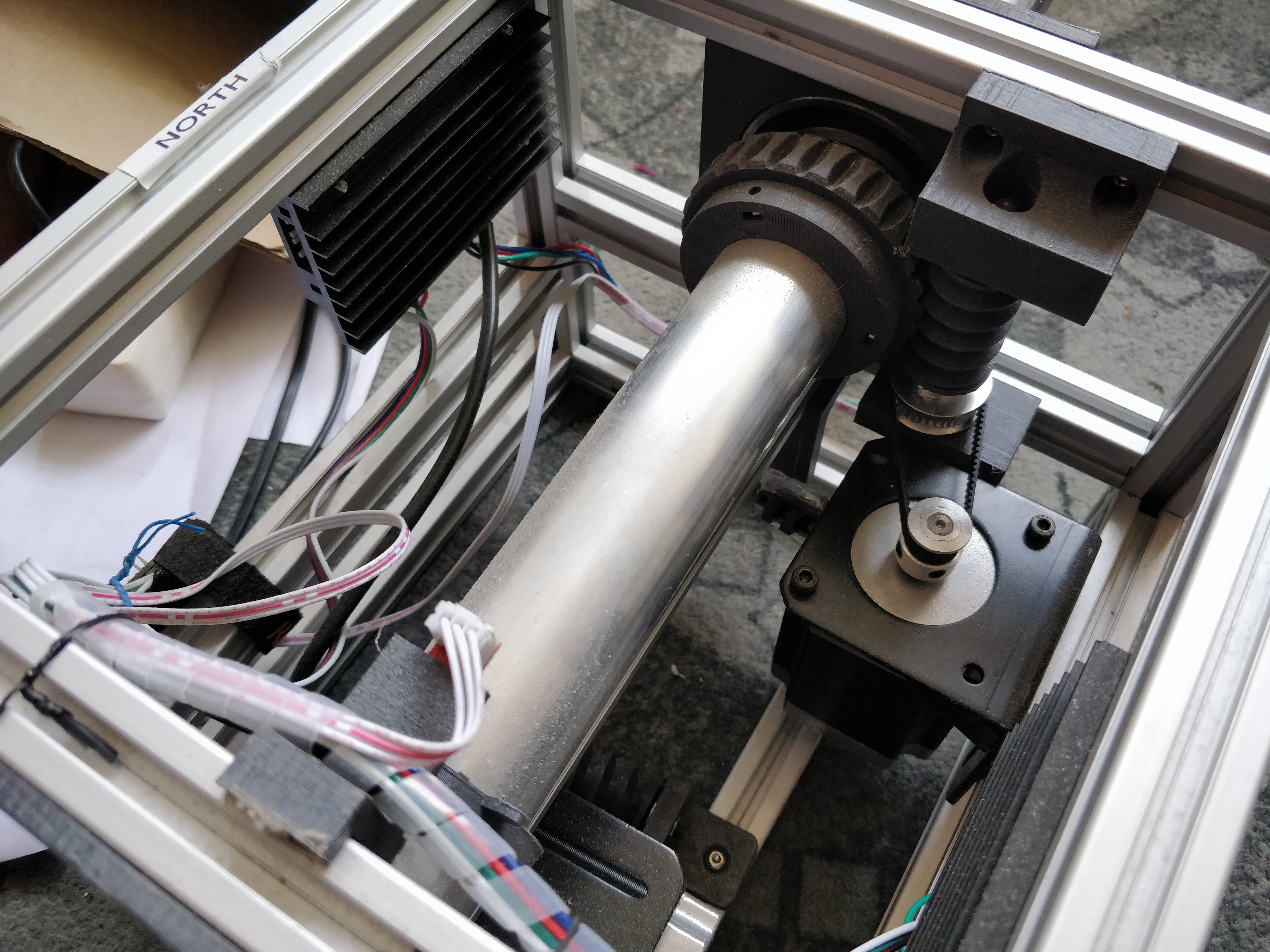DIY AZ/EL Antenna rotator for under 150€
First of all, you can find the STLs of the 3D printed parts on Thingiverse.
I was searching for a AZ/EL Antenna Tracker for my Dish and all I found was quite expensive. After some search I found the Satnogs Project and the Tracker they developt. I then started designing a rotator that follows the same principal as the Satnogs one, but with bigger and stronger stepper motors and a smaller overall size.
The main frame of the Tracker is made out of 2020 Aluminium extrusion with a length of 20cm each. I used 3 way corners and 90 degree angles to bolt everything together. Both axis are made out of Aluminium pipes with an outer diameter of 38mm that run in two ball bearings with an inner diameter of 40mm. I printed an Adapter for the 38mm pipe beacause the 40mm pipe I got was a little too big to fit into the bearing. The Bearings are hold on with a printed mount, that bolts onto the 2020 with four m4 bolts and hammer nuts each.
I used NEMA23 stepper motors (3A ones) to drive both axis that are mounted with metal brackets to the frame and have a GT2 20T pully on it. They are driven by TB6600 stepper drivers that are really cheap but seem to work great so far.
The worm gearbox is made out of a 3d printed Gear on the shaft (38mm pipe) and the wormgear on a 80mm M5 bolt that is mounted with printed brackets to the Frame. I used a 40T pully on the wormgear side and secured the gear with a M5 nut. M3x10mm grub screws are used to secure the gear on the shaft. The GT2 belt I used is a closed loop one that is 160mm long.
For the control I used a simple Arduino Nano that is connected to two optical end stops and the stepper drivers. The serial interface over USB is used to connect it to tracking software like Orbitron or WXTrack. I implemented the well-known GS-232 protocol that is supported by most software these days.
I tested my DIY sat tracker on a 70° NOAA pass and it worked great with my DIY VHF carbon Yagi. There was also a steel bracket and a 50cm long aluminium tube mounted to the elevation axis, as you can see in the video. The weight was not a problem at all an WXTrack controlled everything as it should.
After that I tested if it would be able to lift my 1.2m Dish, I already thought that it was to heavy but I tried it anyway. Unfortunately the upper bearing mount broke because the weight was not distributed evenly.
So if you only need a tracker to move smaller antennas like a Yagi or a small dish, it is a great alternative to a comercial antenna rotator.
My build is not completely finished, but you can build something similar with the part's I used, if you like to tinker a bit.
I also made a video about the AZ/EL Tracker I made:
Part List
- 2x NEMA23 (I used 3A ones)
- 2x TB6600
- 4x 6008 2RS bearings
- 2x Aluminium pipes 40x3mm (i used 38x3mm with a printed adapter because of tolerances)
- 2x Optical endstops
- 19x 2020 Aluminium extrusion, each 20cm long
- 8x inside 3 way corner bracket for 2020
- T-Slot inside corners
- M4 hammer nuts
- M4x6mm screws
- 2x Nema23 brackets
- 4x 625 ZZ bearings
- 2x M5x80m
- M3 nuts
- M3x10mm grub screws
- 2x 40T GT2 pully (5mm inner diameter)
- 2x 20T GT2 pully (6.25mm inner diameter for motor)
- 2x 160mm closed loop GT2 belt
- Arduino nano or similar
- soldering stuff and cable
The code i wrote is not bug free nor optimal but it works. You can download it if you want: Sat Tracker sketch
Here are some images of the Rotor for a better understanding of the construction:



{{ 'Comments (%count%)' | trans {count:count} }}
{{ 'Comments are closed.' | trans }}